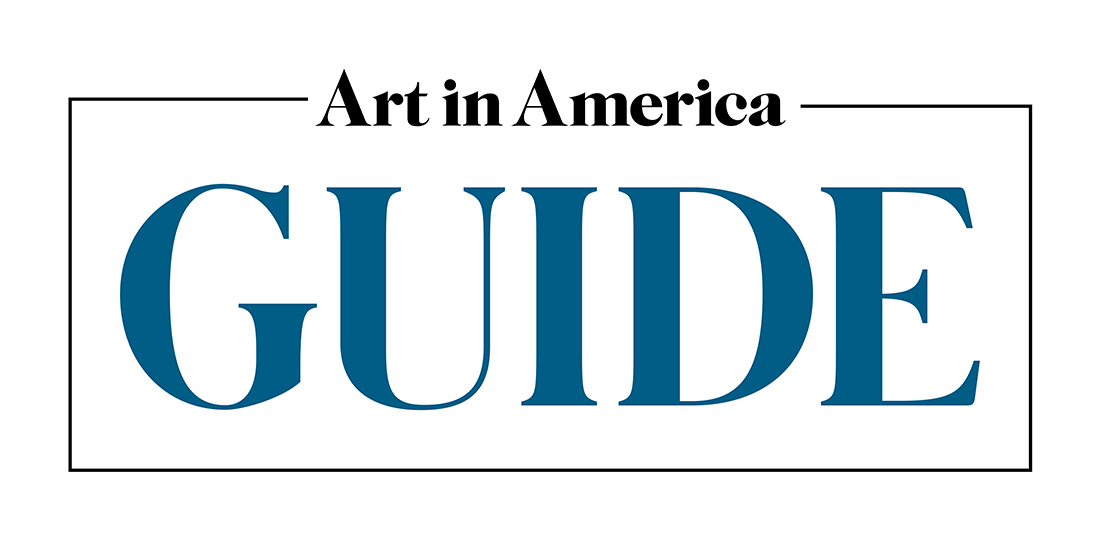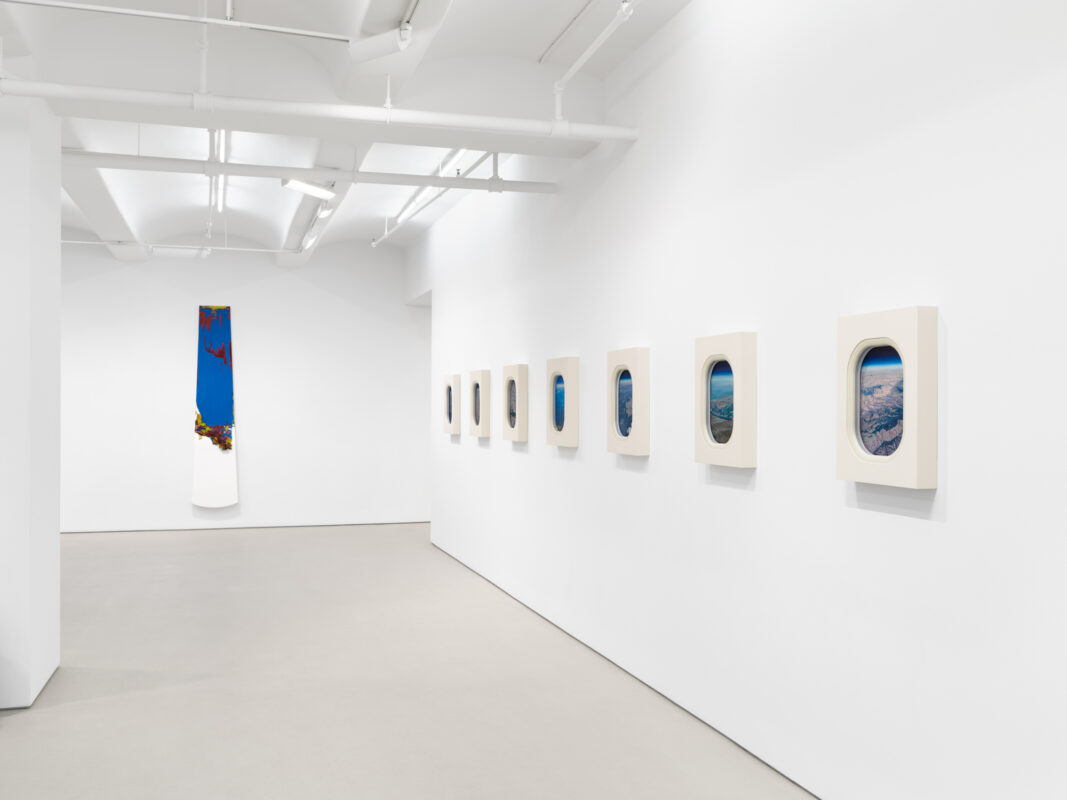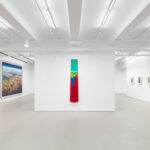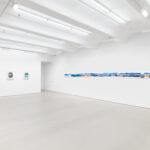Jack Shainman Gallery
June 4 – August 2, 2024
Leslie Wayne
This Land
“Trickster what is it you know?
What ripples across
the waves of a deep lake of being?
Tell me the secrets of those matters of blood too deep for words.”
–Taylor Brorby, “The Ages Have Been at Work”
Jack Shainman Gallery is pleased to present This Land, an exhibition of two kindred bodies of work by Leslie Wayne that express the nature of the American West through perception and memory. In each piece, Wayne considers different ways in which we interpret and imagine geological space, exploring landscape both as a vertical, abstracted force and a horizontal, figurative expanse. Named in homage to Woody Guthrie’s heartland ballad “This Land is Your Land,” Wayne offers a contemporary vision of Manifest Destiny—imbuing her symbolic, and experienced, westward voyages with topographies that are sensorial, memorial, and tectonic.
In a series of dimensional abstract paintings on large, metronome-like planks, Wayne uses a dramatic and vibrant palette to mold paint so that it cascades down the wood panel in a multitude of ways. Applying the paint in heavy layers, she encourages the influence of gravity and refines her materials to their most basic form, color, and behavior. Adopting, rather than controlling the rhythm of nature, these compositions are fluid to the viewer’s myriad associations with this image of momentum—be it reminiscent of the rush of an avalanche, the swell of hot lava, or the pileup of driftwood on a seashore.
In her series entitled This Land is Your Land, she creates compact, observational paintings based on snapshots she took from her seat as she flew west over the Rocky Mountains all the way to the Cascade Range in Washington State in 2021. Creating a precise mise-en-scène by placing each painting in a frame that resembles the Boeing 737 window she peered out from, Wayne transports her viewers into a precise sensation: beholding our nation as the land settles into one continuous, harmonious expanse—stripped down to simple shapes and shades. Her portholes offer a view into a terrain of awe, reminiscence, and omniscience, a collective vision of a region fraught with, and fractured by, territories and borders.
Extending beyond the format of the airplane-window frame, Wayne has also created two unique works inspired by the same journey. The first is a twenty-two-foot-long painted scroll entitled From the Rockies to the Cascades, in addition to High Dive, a large-format painting in which she stretches her canvas onto a frame of coiled springs—materials that simulate a bird’s-eye view of the landscape as if seen by a skydiver descending towards a trampoline. The paintings from this series are accompanied by a vitrine displaying Wayne’s special limited edition This Land, a handmade accordion book that illustrates the aerial photographs from her voyage, alongside Taylor Brorby’s poem “The Ages Have Been at Work” and the lyrics to Woody Guthrie’s “This Land is Your Land.”
In German, heimat is a term used to describe not only the characteristics of a place, but the complex and interdependent physical, social, and mental associations with a homeland. For Wayne, this sentiment stretches, folds, and bends from the west coast, her childhood home, to the east coast, where she has resided since 1982. Treading across this land, psychic routes unfold, and Wayne savors “That path [which] is never straight and always various, each time opening new ways of seeing and thinking about the world we occupy, the ways we inhabit nature, and the legacies we leave behind.”








